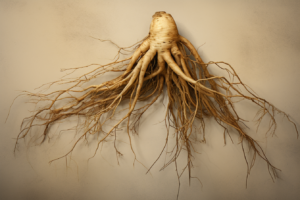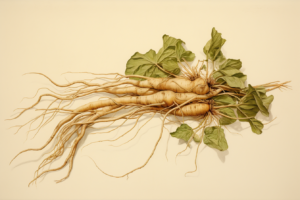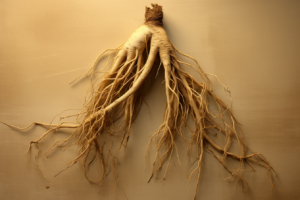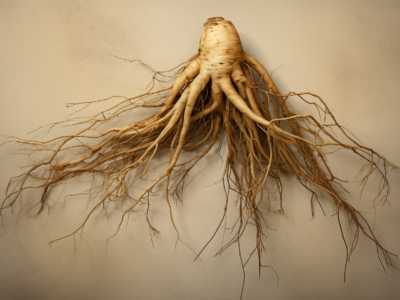Introduction to Ginseng Farming and Sustainability
Ginseng farming and sustainability have become increasingly important topics in recent years. American ginseng, a wild plant native to eastern North America, is a popular medicinal herb that is highly sought after for its medicinal properties. Forest farming is a sustainable way to cultivate ginseng and other forest products, while also conserving wild populations of ginseng. The Convention on International Trade in Endangered Species of Wild Fauna and Flora (CITES) and the U.S. Fish and Wildlife Service (FWS) regulate the international ginseng trade to ensure the sustainability of wild ginseng populations.
Growers of ginseng must adhere to forest farming practices to ensure the sustainability of the ginseng harvest. This includes planting ginseng seed, cultivating ginseng plants, and harvesting ginseng roots. In addition, modern research has shown that ginseng is a shade-obligate species, meaning that it requires specific growing conditions to thrive. As a result, ginseng growers must carefully examine ginseng in an area to ensure that the growing conditions are suitable for ginseng production. Furthermore, the market price for wild-appearing ginseng roots is as much as five times higher than the price for cultivated American ginseng, making it important for ginseng growers to produce truly wild ginseng. By following these guidelines, ginseng growers can ensure a sustainable supply of forest herbs in the eastern United States and a pathway to a sustainable supply of ginseng and other forest products.
Benefits of Forest Farming
Forest farming is a sustainable agricultural practice that has many benefits for both the environment and humans. It is a form of agroforestry that combines traditional farming practices with forestry techniques to create a diverse and productive ecosystem. This type of farming is especially beneficial for the conservation of wild American ginseng, a medicinal plant that is native to North America. By growing ginseng in a forest setting, farmers can help to protect wild ginseng populations and ensure that the plant is available for export.

Ginseng may be grown in a variety of forms, including wild-simulated American ginseng, forest-grown ginseng, and woods-grown ginseng.
Each type of ginseng has its own unique benefits, such as the ability to produce higher yields and better quality ginseng products.
In addition, forest farming operations can help to protect the habitat of wild ginseng diggers, as well as the development of ginseng nurseries to produce ginseng without the collection of wild ginseng. This helps to reduce the demand for wild ginseng and conserve wild ginseng populations. Furthermore, forest farming operations can help to increase the production of ginseng, which is essential for the ginseng market in the 21st century.
Sustainable Ginseng Forest Farming
Sustainable ginseng forest farming is a great way to cultivate the export of ginseng may, panax ginseng, and American ginseng root. It involves the cultivation of ginseng, planting seed, and creating a habitat for ginseng to form. During the growing season, the appendix II of the convention is used to monitor the growth of ginseng leaf and the ginseng program. The ginseng res is also used to monitor the production of ginseng in the 21st century.
Cultivation of American ginseng and ginseng forest farming in Pennsylvania is a great way to ensure the conservation of ginseng. Commercial ginseng growers use the forest grown verification to ensure that ginseng grows in its natural environment. Ginseng occurs in Asia, and is available internationally. Ginseng actually grows wild in many parts of the world, and is a species of panax quinquefolius l. Plant health is also monitored to ensure that the ginseng is of the highest quality.
Ginseng Collection and Program
Wow, the Ginseng Collection and Program is really something! It’s a great way to ensure the preservation of ginseng habitat and the cultivation of American ginseng. It’s also a great way to ensure the production of ginseng in the 21st century. Not only that, but it also helps to make sure that Asian ginseng and other ginseng species are available internationally. It’s amazing how natural ginseng can be made available to everyone!
I’m so glad that the Ginseng Collection and Program exists. It’s a great way to ensure the growth and production of ginseng in the 21st century. It’s also a great way to make sure that ginseng is available to everyone. It’s really incredible how this program is helping to preserve ginseng habitat and cultivate American ginseng. It’s truly amazing!
Challenges of Ginseng Farming and Sustainability
Ginseng farming and sustainability present a unique set of challenges. For starters, ginseng form is highly sensitive to environmental conditions, making it difficult to cultivate and maintain. This means that ginseng growth is often slow and unpredictable, making it difficult to ensure a steady supply of ginseng production in the 21st century.

What’s more, ginseng is in high demand internationally, making it difficult to keep up with the demand. This means that ginseng available is often limited, and prices can be quite high.
This can make it difficult for farmers to make a profit, and can also lead to unsustainable farming practices.
All in all, ginseng farming and sustainability present a unique set of challenges that must be addressed in order to ensure a steady supply of ginseng in the future.
Conclusion
Ginseng is an herb that has been used for centuries in traditional Chinese medicine and is now gaining popularity internationally. It is known for its many health benefits, including boosting energy, improving mental clarity, and reducing stress. It is also believed to have anti-inflammatory, antioxidant, and immune-boosting properties. Ginseng is available in many forms, including capsules, teas, and tinctures. It is important to note that ginseng should be used with caution, as it can interact with certain medications and can cause side effects.
In conclusion, ginseng is an herb with a long history of use in traditional Chinese medicine. It is gaining popularity internationally due to its many health benefits, including boosting energy, improving mental clarity, and reducing stress. It is available in many forms, including capsules, teas, and tinctures. However, it is important to use caution when taking ginseng, as it can interact with certain medications and can cause side effects. With proper use, ginseng can be a beneficial addition to any health regimen.

FAQ’s:
Q1. What is ginseng farming?
A1. Ginseng farming is the cultivation of ginseng plants for the purpose of harvesting the root for medicinal and culinary use.
Q2. How is ginseng farmed sustainably?
A2. Sustainable ginseng farming involves practices such as crop rotation, soil conservation, and integrated pest management to ensure the long-term health of the ginseng crop.
Q3. What is the international market for ginseng?
A3. The international market for ginseng is growing rapidly, with demand for the root increasing in countries such as China, Japan, and South Korea.
Q4. What are the benefits of ginseng farming?
A4. Ginseng farming provides economic benefits to farmers, as well as environmental benefits such as soil conservation and carbon sequestration.
Q5. What are the challenges of ginseng farming?
A5. Ginseng farming can be challenging due to the long growing cycle of the plant, as well as the need for careful management of pests and diseases.
Q6. How can ginseng farming be made more sustainable?
A6. Ginseng farming can be made more sustainable by implementing practices such as crop rotation, soil conservation, and integrated pest management.
Q7. What is the future of ginseng farming internationally?
A7. The future of ginseng farming internationally is bright, with demand for the root increasing in countries such as China, Japan, and South Korea.



 Ginseng And Mental Well-Being
Ginseng And Mental Well-Being
